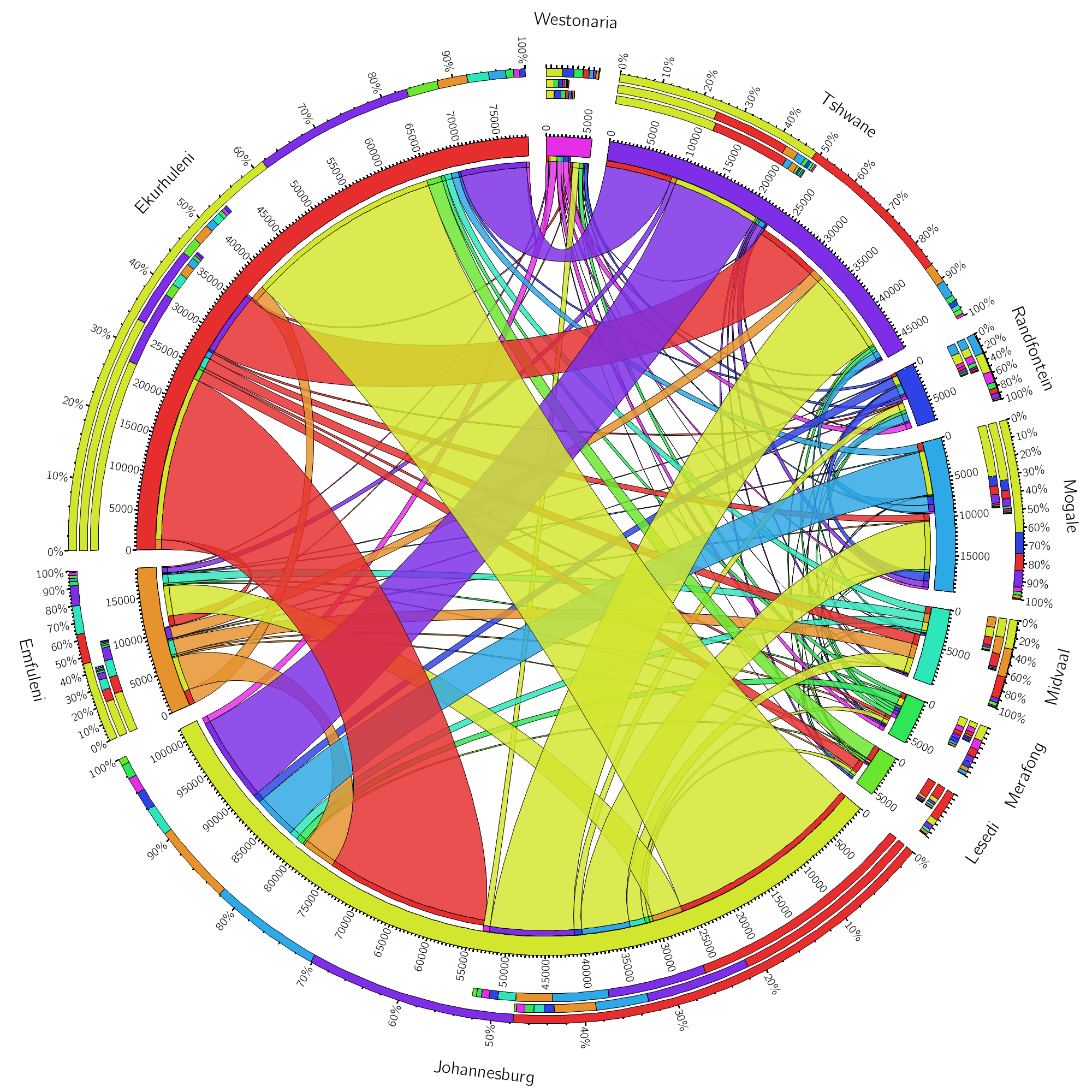Urban areas and city regions in particular have the highest volumes of migration in the country. There are large volumes of people moving to and from the city regions. It is understood that a large proportion of this movement is also taking place between and within the city regions of South Africa. To what extent are these movements taking place and what is the relationship between the cities in the Gauteng city region?
Inter-municipal migration Gauteng 2006 to 2011 (Census)
This diagram excludes migration from and to other municipalities outside the province; therefore intra-provincial migration is shown. Migration flows touch the outer ring of municipality of origin and the flow lines stop short of municipality of destination. The flow volumes are represented by the extent and numbering of the outer ring. The proportion of in-flowing volumes per municipality is also represented.

The Gauteng city region population is highly mobile. The province has seen significant in-migration between 2006 and 2011 and it is well known that the province is a popular destination for migrants from within the boundaries of South Africa, and beyond. Read more >> There is significant movement between the City of Johannesburg and Ekurhuleni, and the flow of persons between the City of Tshwane and the City of Johannesburg is also substantial. A paper exploring the population dynamics across South Africa and for the Gauteng city region, presented by Amy Pieterse at the 2014 Planning Africa Conference, provides an insightful summary of these spatial trends. Read more >>
Based on municipal level migration data from the 2011 Census it is possible to determine the flow of people between two municipalities between 2006 and 2011 by constructing matrixes with the Statistics South Africa (Stats SA) codes for origin and destination municipalities as row and column headings respectively. Census-based inter-municipal migration volumes in respect of all inter-municipal migrants (excluding intra-municipal mobility levels) for the entire enumerated population for the 2006 to 2011 period are considered. In-, out- and net migration could also be calculated using the totals from the origin and destination rows and columns.
Core Team:
Amy Pieterse, Johan Maritz, Dr Pieter Kok (Independent contractor), Keamogetswe Maditse
Acknowledgement to contributors and dissemination partners:
- SACN & COGTA: Demographic Research Report to support the draft Integrated Urban Development Framework, 2014 (Geci Karuri and Modjadji Malahlela)
- Planning Africa 2014 Conference (SAPI)
For more information contact:
Amy Pieterse,
apieterse@csir.co.za


